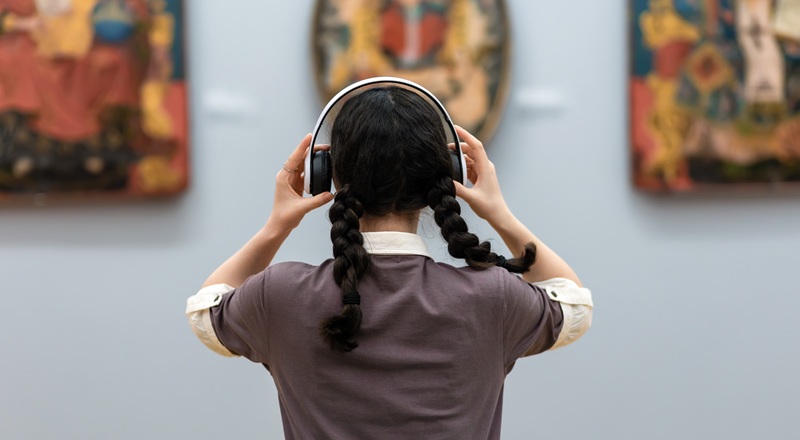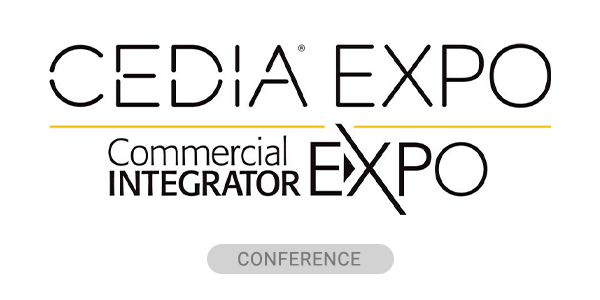Performing arts centers (PACs) and theaters have emerged as enthusiastic early adopters of Auracast™ broadcast audio. With this rise in Auracast™ enabled technologies, integrators should consider moving into this technology space as it enables venues to offer assistive listening while simultaneously enhancing the overall audio quality of performances.
This article explores the advantages of bringing in Auracast™ based devices to integration projects across various verticals, including museums and higher education classrooms.
Benefits of Auracast™ Enabled Technologies for Integrators
Clear Audio for Everyone
Auracast™ systems broadcast multiple channels, allowing venues to increase accessibility and offer more than assistive listening. Additional channels could provide an interpretation of the performance in another language. They could also be used for audio description so visually impaired guests can hear a descriptive narrative about what is happening onstage.
In venues featuring Auracast™ transmitters, guests with Auracast™ compatible hearing aids, earbuds, headphones or smartphones can have high-quality performance audio (background noise is filtered out for even better intelligibility) delivered directly to their ears.
Moreover, the process is as easy as selecting a Wi-Fi network. Guests browse the available broadcast channels using an Auracast™ assistant (often this is their smartphone), select the channel they prefer, and receive the audio in their compatible device. There is no equipment to check out before or return after the performance.
If users don’t have a compatible device, there are dedicated Auracast™ receivers they can borrow from the venue. Receivers with dual jacks mean two people can plug headphones into a single receiver and enjoy the performance audio together.
Breadth of Range
The Auracast™ assistive listening systems can also broadcast to unlimited receivers within range, so every guest with a compatible device or dedicated receiver can access clear audio. The range is broad (more than 100 meters), and venues can link transmitters for expanded coverage. This means guests can hear audio throughout the venue — at concessions, in the lobby and hallways, and restrooms — so they don’t miss any of the performance if they must step out of the theater or are in a queue. This has especially resonated with theaters and PACs, with many expressing excitement about this feature.
Benefits For Venues and Guests
Venue managers appreciate the ease of installation associated with Auracast™ transmitters. They don’t need to close theaters for an extended period or remodel interiors to accommodate the technology. This is a benefit for any venue, but especially for historic sites where preservation is essential. Transmitters are small (about the size of a Wi-Fi router) that integrators can mount them discreetly on walls and poles without disrupting the architecture and overall aesthetic of a space.
Signage and dedicated receivers are available so systems can be configured to comply with all international requirements for assistive listening. They can also integrate with existing assistive listening systems to complement and extend their capabilities and to provide redundancy.
For example, a venue with a hearing loop in its theater could benefit from an Auracast™ based system that extends audio to adjacent spaces and offers guests another way to access performance audio. A PAC with a radio frequency- or FM-based system that works well and is frequently used by guests may choose to add an Auracast™ based system as another option for assistive listening. In doing so, they would provide guests more ways to access audio. To achieve this, they could borrow an FM receiver or an Auracast™ receiver, or they could use their own Auracast™ compatible device.
Moreover, the integrator would also be future-proofing the venue. As Auracast™ becomes more prevalent in the market, integrators will be able to accommodate more guests at the venue who prefer to use their own devices.
Auracast™ in Educational Settings
Integrators working in higher education will also find opportunities for Auracast™ assistive listening systems to support the needs of educators and students. We have already seen many large higher education institutions start to invest in Auracast™. Below are few factors driving this investment forward:
Increase in Convenience
Students can listen to university broadcasts via their compatible device without needing to access a Wi-Fi network or download an app, making it easier to tap into clear audio.
Historically, assistive listening devices have been challenging for universities to manage. Students and faculty typically would need to find an accessibility office, then check out and keep track of equipment. The process makes it highly inconvenient for the user and the venue manager.
Self-consciousness can also factor in for people who may not like wearing or using equipment that brings attention to their disability. Auracast™ systems help mitigate these issues. Even without full consumer proliferation of Auracast™ in all devices, students are more apt to want to use this technology.
Versatility and Adaptability
Auracast™ is useful in multi-room, multi-screen settings on university campuses. Listeners can access broadcast streams from video walls and monitors in student centers, fitness centers, dining halls and esports arenas.
It is also an easily accessible form of technology that can appeal to everyone, not just individuals who rely on hearing assistance technologies. Thinking that assistive listening is only for individuals with hearing loss or who wear hearing aids is the most profound barrier, and an advantage Auracast™ has over other assistive listening technologies is that it is accessible for everyone. Auracast™ makes it possible to deliver audio to all people, whether they are using a hearing aid, a wireless earphone set, their own smart device or need to borrow a receiver device.
Ultimately, for higher education AV integrators, the appeal of an Auracast™ based system lies in its ability to deliver high-quality, low-latency audio within a digital ecosystem without relying on existing Wi-Fi infrastructure. As audio technologies continue to evolve and transform classrooms, wireless listening should advance alongside them. With Auracast™, assistive listening finally complements the modern, connected learning environment.
Final Thoughts
In performing arts centers and higher education, in particular, Auracast™ based assistive listening systems are increasing accessibility and shared experiences. Integrators who might not typically think about assistive listening or be inclined to use it are tuning in because it’s available, easy to access and elevates the audio experience.
In summation, in the short time Auracast™ assistive listening has been in the market, I have seen it already lending itself as a primary technology — not just for standard assistive listening, but in any aspect of delivering an exceptional wireless audio experience.
Kasey Kaumans is market development manager at Listen Technologies and Ampetronic.




